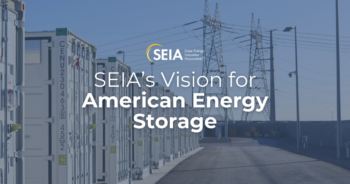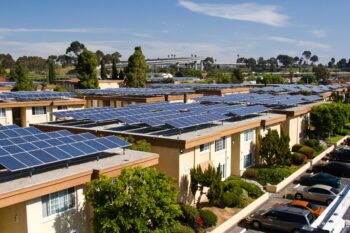WASHINGTON, D.C. – Calling it “unfair to families, businesses and churches,” the Solar Energy Industries Association (SEIA) is urging West Virginia Gov. Earl Ray Tomblin to veto HB 2201, which could jeopardize the future of rooftop solar in the state by rewriting West Virginia’s net-metering policies. Rhone Resch, SEIA president and CEO, said the legislation needs to be revised before becoming law:
“SEIA doesn’t object to investigating the costs and benefits of net energy metering, but we do object to the assumption that any potential cost shift from a net metering customer to other customers is unjustified. Retail utility rates often include cost shifts that functionally serve as inter-class and intra-class cross-subsidies. These cost shifts are justified on a variety of rationales, both practical and policy-driven. Unfortunately, this legislation would have the practical effect of stymying – if not killing – the growth of rooftop solar in West Virginia. Most onerously, the legislation fails to protect hundreds of families, businesses and churches that have already installed solar from being hit with unfair charges. It’s neither logical nor fair to rewrite ratemaking rules for one set of customers or one policy initiative, while ignoring similar effects of other rates and policies. We strongly urge Gov. Tomblin to veto this bill and send it back to the drawing board.”
Today, solar is the fastest-growing source of renewable energy in America, employing nearly 175,000 American workers and pumping $15 billion a year into the U.S. economy. Â In the past four years, employment in the solar industry has increased by more than 85 percent – and last year alone, solar created one out of every 78 new jobs in America. Â What’s more, the U.S. now has an estimated 20 gigawatts (GW) of installed solar energy capacity nationwide, which is enough to power more than 4 million homes – or every single home in a state the size of Massachusetts or New Jersey – with another 20 GW in the pipeline for 2015-16.
About SEIA:
Celebrating its 41st anniversary in 2015, the Solar Energy Industries Association® is the national trade association of the U.S. solar energy industry. Through advocacy and education, SEIA® is building a strong solar industry to power America. As the voice of the industry, SEIA works with its 1,000 member companies to champion the use of clean, affordable solar in America by expanding markets, removing market barriers, strengthening the industry and educating the public on the benefits of solar energy. Visit SEIA online at www.seia.org.
Media Contacts:
Ken Johnson, SEIA Vice President of Communications, kjohnson@seia.org (202) 556-2885
Samantha Page, SEIA Press Officer and Communications Manager, spage@seia.org (202) 556-2886




